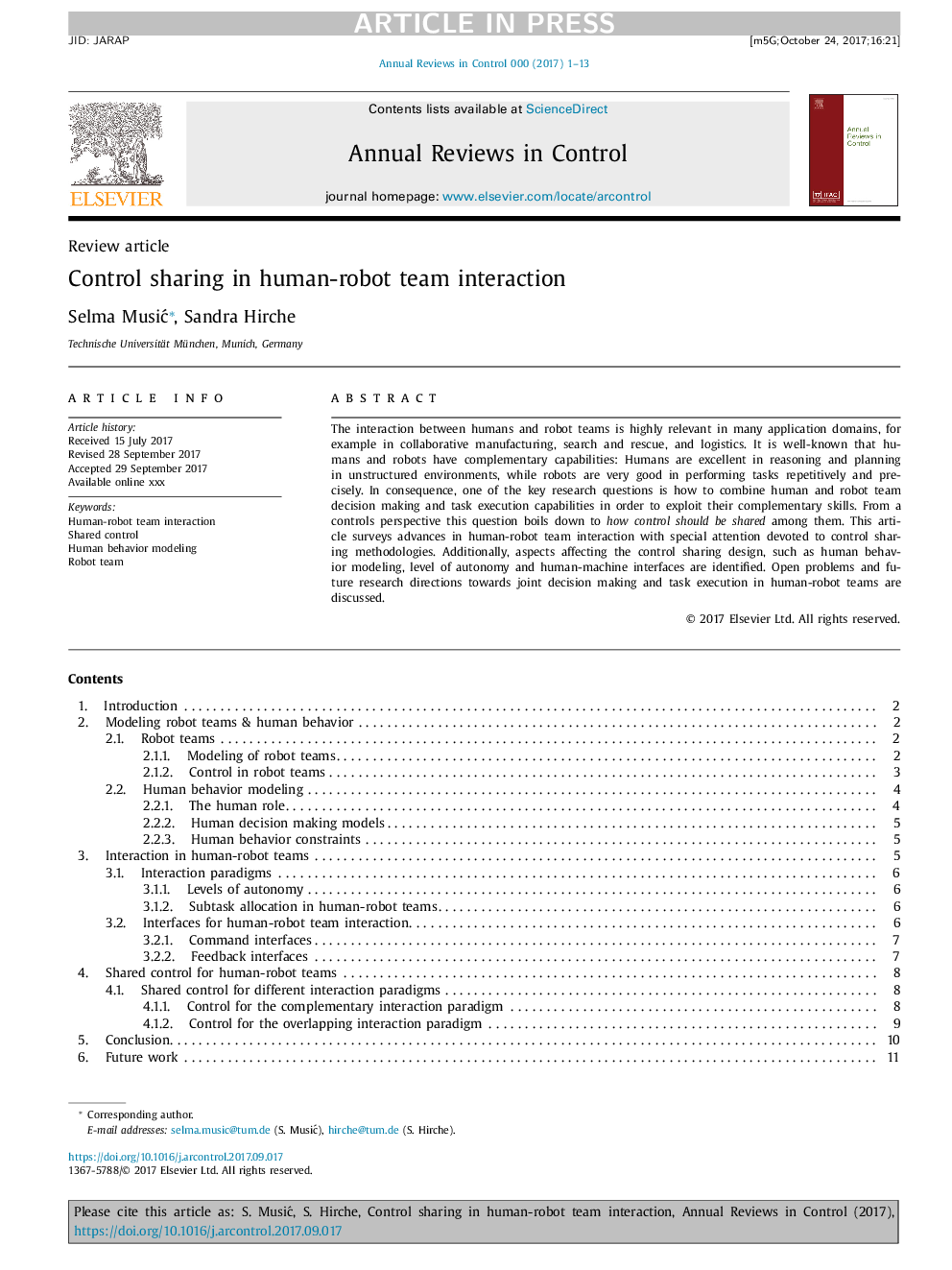| Article ID | Journal | Published Year | Pages | File Type |
|---|---|---|---|---|
| 7107856 | Annual Reviews in Control | 2017 | 13 Pages |
Abstract
The interaction between humans and robot teams is highly relevant in many application domains, for example in collaborative manufacturing, search and rescue, and logistics. It is well-known that humans and robots have complementary capabilities: Humans are excellent in reasoning and planning in unstructured environments, while robots are very good in performing tasks repetitively and precisely. In consequence, one of the key research questions is how to combine human and robot team decision making and task execution capabilities in order to exploit their complementary skills. From a controls perspective this question boils down to how control should be shared among them. This article surveys advances in human-robot team interaction with special attention devoted to control sharing methodologies. Additionally, aspects affecting the control sharing design, such as human behavior modeling, level of autonomy and human-machine interfaces are identified. Open problems and future research directions towards joint decision making and task execution in human-robot teams are discussed.
Keywords
Related Topics
Physical Sciences and Engineering
Engineering
Control and Systems Engineering
Authors
Selma MusiÄ, Sandra Hirche,
